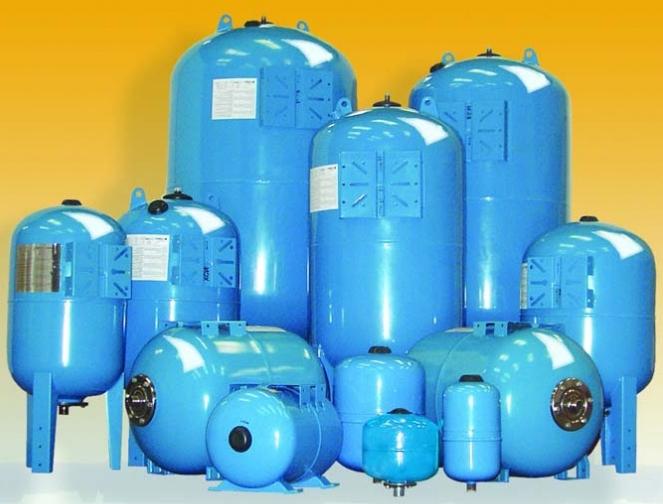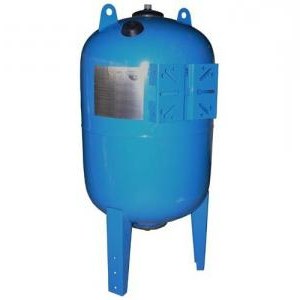An important element of the water supply system are accumulators or, in other words, membrane tanks. For water supply they are of great importance. Firstly, they act as water storage tanks and serve to maintain the necessary pressure and optimal functioning of the system. Secondly, a membrane expansion tank for water supply serves as a damper for water shocks, which often appear when the pump is turned on or when cranes are opened. In addition, it is this equipment that creates the necessary pressure for the proper operation of the entire water supply system.

The principle of operation of such an installation is quite simple. A hydraulic accumulator is a container made of steel; inside it is a rubber membrane where water enters. Between the tank wall and the rubber flask there is air. When the consumer opens the faucet, water will begin to flow to it under the initially set pressure. When the tank is partially empty and the pressure in it drops to a certain mark, the pressure switch will turn on the pump station. In the case when the tap is turned off, the pump will work for some time and pump water into the tank from the well or well, increasing the pressure that was originally set. Such a scheme of work helps to reduce the number of on and off of the pump, which means it can increase its service life.

Membrane tanks for water supply come in two types: vertical and horizontal. When the room allows you to use both of these types, you should pay attention to the method of removing air from the rubber membrane. Vertical tanks collect air in its upper part, it can be easily bleed by means of a nipple, which is available on any accumulator. Horizontal pressure vessels require the installation of an additional section, which includes a ball valve, air nipple and drain into the sewer.
It is important to know how to properly mount a membrane tank for water supply. The installation manual recommends following a few important rules when installing the equipment:
1. Tanks should be installed in a place convenient for maintenance, where the accumulator will not be subject to damage, vibration or weathering.
2. On the branch pipe leaving the tank, it is necessary to install a safety group consisting of a safety valve, an air vent and a pressure gauge.
3. The pipe must be connected to the tank from below.
4. Before putting the system into operation, it must be subjected to a hydraulic test. All diaphragm tanks for water supply pass a pressure test at the plant, which is several times higher than the working one.
5. Before mounting the tank, check the diaphragm pressure with a pressure gauge.
Of course, the presence of a hydraulic accumulator is not a prerequisite. In open systems, this equipment is completely redundant. However, for country houses with a closed system, membrane tanks for water supply are very relevant, since they protect their owners from many problems.